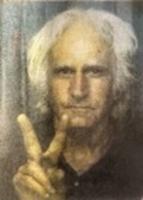As the famous scholar Dr. bell hooks noted, “what we do is more important than what we say or what we say we believe.” As the days since the racist massacre at the Tops Friendly Market in Buffalo, one of many anti-Black racist acts in recent years, we’ve been struck by the now-usual Instagram and Facebook posts by white family, friends and colleagues decrying racism, and of course, the candlelight vigils.
On the face of it, these are not bad things to do in the face of a disaster such as this. However, given how many times we see anti-Black violence in our society, and especially given the explicit anti-Black racism demonstrated in the Buffalo massacre (which echoes in the mouths of many politicians) it is time for a different approach. For those in the non-Black community, putting our money where our mouth is must happen if we are truly against racism and want to see a change. As diversity, equity and inclusion strategist Lily Zheng notes, “this is NOT a time to reach out to Black acquaintances who you never talk with just to demonstrate ‘how much you care.’” It is, however, the time to ask yourself “What are the people who experienced this violence going through?” “How will people feel about going back to Tops supermarket — will they worry about being a target again?” “What must it mean to Black people to think that anti-Black violence is on the rise, and that this could have happened to them?” Also important to consider are the ways that the Black communities can be supported in healing from racial trauma and fostering resiliency.
First, non-Black community members must recognize that the needs and needed actions in response to the massacre differ depending on our race and ethnicity. We need to move beyond the idea of being “colorblind,” or the idea that all people have similar reactions to events such as the Buffalo massacre. Watching Rev. Mark E. Blue, leader of the Buffalo NAACP, respond to reporters’ questions while simultaneously grieving and pointing out longstanding neglect of the Buffalo Black community on a range of issues should trigger understanding of how difficult it is to be Black in America, especially in these moments. The emotional labor asked of our Black community members in times such as these, especially, is overwhelming. Non-Black people must learn as they listen to community members of color, and truly listening is of paramount importance.
Second, for non-Black Salem residents, we must move toward implementing tangible anti-racist action in our families, communities and workplaces. As Lily Zheng also notes “if you made a dramatic promise or commitment to allyship or solidarity or antiracism in the last few years, then you don’t need to do it again today. Put your energy into doing the work.” This means building consciousness about the Black experience in general, beyond this particular moment in time. Meaningful responses to the Buffalo massacre might include the following:
Work on understanding what white supremacy means: This is not about the Klan, for example, rather, look at the ways in which white supremacy has evolved all around us. Where do you see toxic ideologies manifest in your own life? How have you heard about the “replacement theory” that the Buffalo gunman was driven by? Learning the truth about the racist history of our country, which is well-documented. Consider how much you live in the majority white world. Ask: Can I expand my horizons to include more friends of color in a non-tokenistic way? Can I begin to seek out businesses owned by people of color, for example? Can I at least notice the whiteness of my world and how that shapes and influences personal comfort as experienced by people of color?
Look in your own backyard for how racism is sustained intentionally or unintentionally: Carve out time to examine your workplace, organization, club, community or house of worship’s culture, structure, or rules that might foster or sustain racial injustice. Determine who could make that reality shift. It might even be you.
Encourage your organization or workplace to review commitments to racial justice: What have they done in the years since the murder of George Floyd? Have efforts slacked off? What can they do that is both measurable, and allows for accountability. Move beyond organizational commitments to strategic plans that center racial justice.
Examine your own attitudes about Black and brown people: We contend that we have all been raised in a racist society. Racism has rained down on all of us — and therefore, how can any of us not be racist? It is nobody’s fault if we hold views that might be considered racist. We need to disempower the word “racist,” not take offense at it, offer ourselves some grace, and learn to see where we might be wrong sometimes.
Above all else, act: Do something from the list above and don’t wait around for others to do the work. It is one thing to think good thoughts, it is another thing to actually do good works. As Lily Zheng also notes, “it’s okay to feel scared, uncertain, and uncomfortable faced with the prospect of dismantling white supremacy. But the answer to these feelings is in our work, not just our talk. Choose to put your energy into doing that work, however you can — not trying to perform your way back to feeling comfortable.”
Let’s see how Salem can step up in making meaningful efforts to respond to the Buffalo massacre and other acts of anti-Black racism, right here in Massachusetts.
Lamont D. Simmons, MSW, EdD, and Elspeth Slayter, MSW, MA, PhD, are Salem residents and professors at Salem State University’s School of Social Work.













